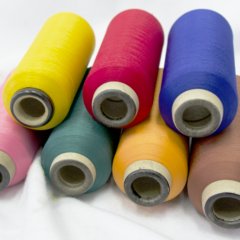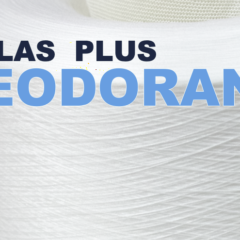Humanity’s first industrially produced synthetic fiber

The Birth of Nylon
In 1935, Nylon was invented by W.H. Carothers in the United States, becoming the first industrially produced synthetic fiber by humans.

Originally a trade name for polyamide (PA) fibers developed by DuPont in the United States, it has now become a generic term for synthetic high-molecular-weight polyamides with fiber-forming properties. Polyamides (PA) are classified into aliphatic, aromatic, and aliphatic-aromatic polyamides, all being linear polymers connected by amide bonds.
In 1938, Nylon was introduced by DuPont as the world’s first fully synthetic fiber. Its slogan at the time was “Stronger than steel, finer than spider silk, a magical fiber made from coal, air, and water.” Nylon threads had a luster similar to silk and were more durable than silk. As a result, Nylon began to be used in women’s stockings, replacing silk. Before World War II, Japan, the world’s leading exporter of raw silk, experienced a drastic decline in exports due to the adoption of Nylon in stockings.
As of 2022, nearly 90 years since the birth of Nylon, it continues to be a major player in synthetic fibers, alongside polyester and acrylic.
Origin of the Name
Initially, when Nylon was first introduced, it aimed to address the major issue of “runs” in expensive silk stockings at the time, caused by thread breakage. DuPont wanted to name it “No-run,” but as the name was already trademarked elsewhere, it became Nylon.
Nylon 6 and Nylon 66
While there are hundreds of aliphatic polyamide linear polymers, the two main types in the current synthetic fiber market are Nylon 66 (also known as Nylon 6,6) and Nylon 6.
Nylon 66, first released by DuPont, consists of two components – adipic acid and hexamethylene diamine – connected by amide groups, resulting in six carbon atoms from adipic acid and six from hexamethylene diamine, hence the name Nylon 66.
Nylon 6, on the other hand, is derived from ε-caprolactam, featuring six carbon atoms.
Both Nylon 66 and Nylon 6 are processed into fibers through melt spinning. Although their fiber properties are similar, Nylon 66 has a significantly higher melting point at approximately 265°C compared to Nylon 6 at around 225°C.
Industrial preference tends to favor Nylon 66 due to its higher melting point, but the choice between Nylon 6 and Nylon 66 for apparel depends on the historical usage and convenience in various countries and regions.
Performance and Applications of Nylon
Nylon is known for its strength, oil resistance, chemical resistance, excellent dyeing properties, and stability across a wide temperature range from high to low. Nylon plastic (non-fiber Nylon) has a low coefficient of friction, particularly good wear resistance, making it suitable for mechanical and construction components as cams, bearings, and apparel-related materials like zipper components.
Nylon fibers possess significant characteristics such as tensile strength, high abrasion resistance, moderate elasticity, and the ability to undergo permanent processing. These attributes make it suitable for both knitting and weaving. Due to its elasticity and resistance to wrinkles, Nylon is particularly well-suited for fine, lightweight fabrics, especially women’s stockings.












